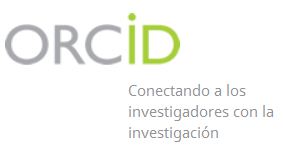SARS-CoV-2 coronavirus detection technology based on the CRISPR/Cas gene editing system
Keywords:
SARS-CoV-2, COVID-19, CRISPR system, CRISPR/Cas, diagnostics, nucleic acidAbstract
Introduction: There is an immediate need to have a diagnostic tool for SARS-CoV-2 in the care centers for patients with COVID-19, whose characteristics show high sensitivity and specificity, low costs and reduced detection times.
Objective: To describe the use of CRISPR-Cas systems for the molecular diagnosis of SARS-CoV-2 infection.
Methods: The Google Scholar search engine was used and free access articles were consulted in the Pubmed, SciELO, LILACS, CUMED and HINARI databases from September 2020 to April 2021. The keywords used for this review were: “SARS-CoV-2”, “COVID-19”, “CRISPR system”, “CRISPR / Cas”, “diagnostics” and their equivalents in English, according to the Health Sciences descriptor (DeCS). Original, review articles, including systematic reviews, were considered. A total of 57 articles were reviewed.
Development: The platforms in development that use the adaptive immune system CRISPR-Cas such as SHERLOCK, STOP-Covid, DETECTR, AIOD-CRISPR, CARMEN, CONAN constitute molecular diagnostic tools for the detection of SARS-CoV-2. They are advanced detection technologies that are being validated in clinical settings as viable rapid diagnostic and surveillance methods for this emerging infection because of their extensive early detection capabilities, being suitable for high throughput use, and having a low cost per test.
Conclusions: Expanding the sequencing capabilities of these platforms will allow us to track the SARS-CoV-2 virus and its mutations in real time with possible implications for the efficacy of future anti-COVID-19 vaccines and therapies.
Downloads
Downloads
Published
How to Cite
Issue
Section
License
Aquellos autores/as que tengan publicaciones con esta revista, aceptan los términos siguientes:- Los autores/as conservarán sus derechos de autor y garantizarán a la revista el derecho de primera publicación de su obra, el cuál estará simultáneamente sujeto a la Licencia de reconocimiento de Creative Commons que permite a terceros compartir la obra siempre que se indique su autor y su primera publicación esta revista.
- Los autores/as podrán adoptar otros acuerdos de licencia no exclusiva de distribución de la versión de la obra publicada (p. ej.: depositarla en un archivo telemático institucional o publicarla en un volumen monográfico) siempre que se indique la publicación inicial en esta revista.
- Se permite y recomienda a los autores/as difundir su obra a través de Internet (p. ej.: en archivos telemáticos institucionales o en su página web) antes y durante el proceso de envío, lo cual puede producir intercambios interesantes y aumentar las citas de la obra publicada. (Véase El efecto del acceso abierto).





